BY LETTER
Low World Houses
Technology > Application > Construction
Technology > Application > Envirotech
Technology > Application > Infrastructure
Culture and Society > Cultural Factors > Interstellar Colonization
Technology > Application > Envirotech
Technology > Application > Infrastructure
Culture and Society > Cultural Factors > Interstellar Colonization
Low canopies to retain a breathable atmosphere on an inhospitable planet | |
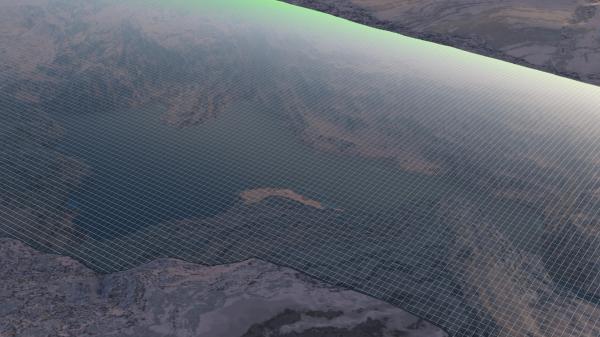 Image from Tasp | |
| A low worldhouse suspended above a canyon to retain a breathable atmosphere on an otherwise inhospitable world | |
A low world house also known as a valley house, is a moderate feat of civil engineering on a par with normal urban or suburban construction, such as roadbuilding, drainage or power, water, sewerage and communication lines. Roofing a small area area is a minor project which even a small colony can achieve with relative ease.
A typical valley house can be around 60 meters high. The edge is anchored to a ledge on the hillsides and a berm with a concrete core and top. The edge walls need to be airtight so the multiple polymer sheets that form the roof are anchored with care with concrete blocks and sealant.
The roof has vertical composite supports every few hundred meters and rafters that can support robots, personnel or a light vehicle loaded with replacement plastic. If the upper plastic is to be replaced, cables laid from rafter to rafter allow the sheets to be drawn over the old sheet, sealed in place and then the old sheet removed from below.
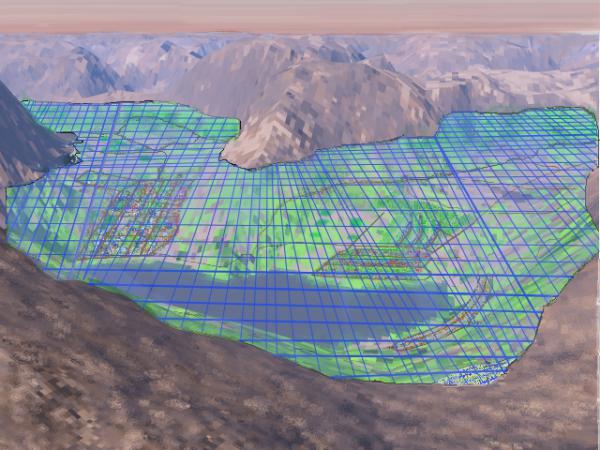 Image from Wesley Bruce |
Most low world houses have at least two separate layers. The upper sheet is called the canopy; this is designed to take the damage of wind, dust and UV flux if any. The canopy is designed to be replaced regularly and is unpressurized. This upper layer is designed to support small robots, vecs and colonists wearing soft 'snowshoe'-like roofwalking gear, allowing the canopy surface to be cleaned and inspected. Nonsentient robots can patch small holes and if necessary strip off a few micrometers of dust or UV damaged plastic and lay down a new smooth layer in its place. More complex repairs can be handled by the colonists themselves, often using remote presence.
The lower sheet is the envelope. It is pressurized and can support the smaller repair robots. It is pushed up against the rafters by the internal atmospheric pressure and is locked in place against the rafter's lower edge. Vibration, curvature and pressure sensors are used to detect leaks and stretching.
A roof of less than 100 metres allows another option. A ground vehicle with a telescoping boom capable of reaching the envelope with a quick repair kit which can patch a small hole in minutes. The patch can be locked in place using extendable poles, freeing the truck to race to the next hole if there is more than one.
With a higher roof, such as a worldhouse roof (which may be tens of kilometres above the ground, these sort of repairs (where a patch needs to be applied internally) require more sophisticated repair teams, such as flying drones or robots using geckotech.
The buildings under the roof are routinely pressurizable, to act as refuges in a bad blow-out. A pressure breach would produce a drop in pressure but the volume under a 60 metre roof is 0.06 cubic kilometres or 60000000 cubic metres of air per square kilometre. A 10 centimetre leak would take many minutes to cause a significant drop in air pressure, allowing colonists to reach safety.
Some low worldhouses have a number of hydrogen/helium balloons tethered in each area; if a pressure breach occurs the balloons are released automatically. They are drawn by the wind to the hole and seal the hole using a layer of smart, adhesive material, creating a temporary patch. Sometimes these balloons are activated by accident, and float to the highest point in the roof, where they adhere until they can be retrieved.
On worlds with particularly thin atmospheres or a high radiation flux a layer of water is often sandwiched between the canopy and the envelope; this water provides protection against ionizing radiation and also as a sealant against small leaks - the escaping water will freeze and seal the gap, at least on a temporary basis. The mass of the water also acts as a counterbalance against the internal air pressure of the worldhouse.
Some low world houses use foam or suspended smart particles in the water layer to provide shade or insulation against excessive heat or cold, a feature which is particularly useful on worlds with significant extremes of temperature.
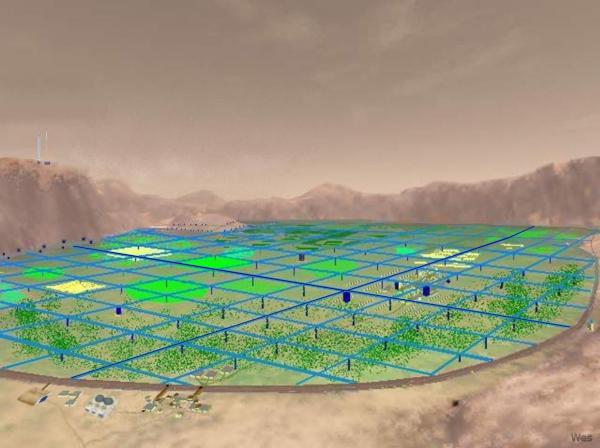 Image from Wesley Bruce | |
| A low world house on an unterraformed Arean type planet. | |
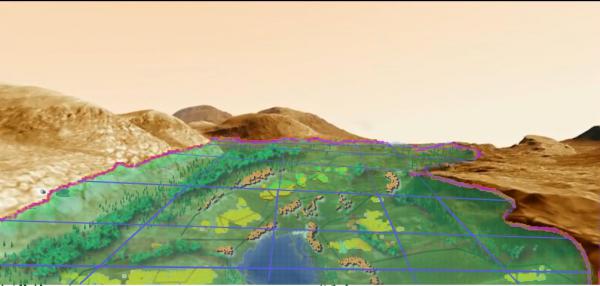 Image from Wesley Bruce |
One of the first locations to use this technology was Gale Crater on Mars, where a low worldhouse was built to supply the early colonists with food crops.
 Image from Wesley Bruce |
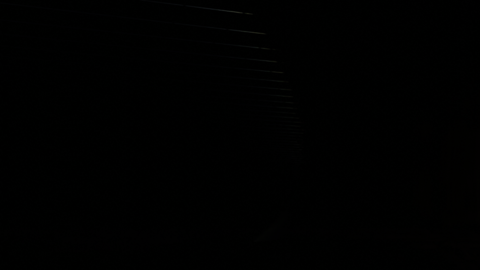 Image from Tasp | |
| the sun passes over a colony with a low worldhouse structure | |
Related Articles
- Bluesky Worldhouses
- Dome Habitats
- Ecopoiesis - Text by M. Alan Kazlev
The science and art of designing, shaping, sculpting, or modifying ecosystems. - Paraterraforming
- Terraformer Swarms
- Terraforming
- Worldhouses
Appears in Topics
Development Notes
Text by Wesley Bruce
additional material/images by Steve Bowers and Tasp
Initially published on 30 July 2013.
images by Tasp added march 6, 2025
additional material/images by Steve Bowers and Tasp
Initially published on 30 July 2013.
images by Tasp added march 6, 2025






